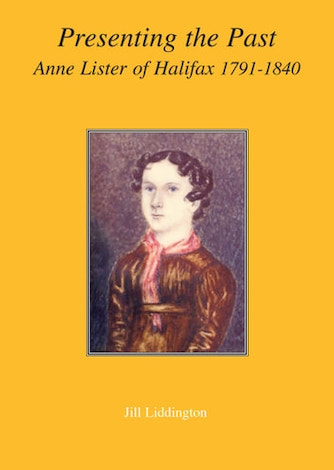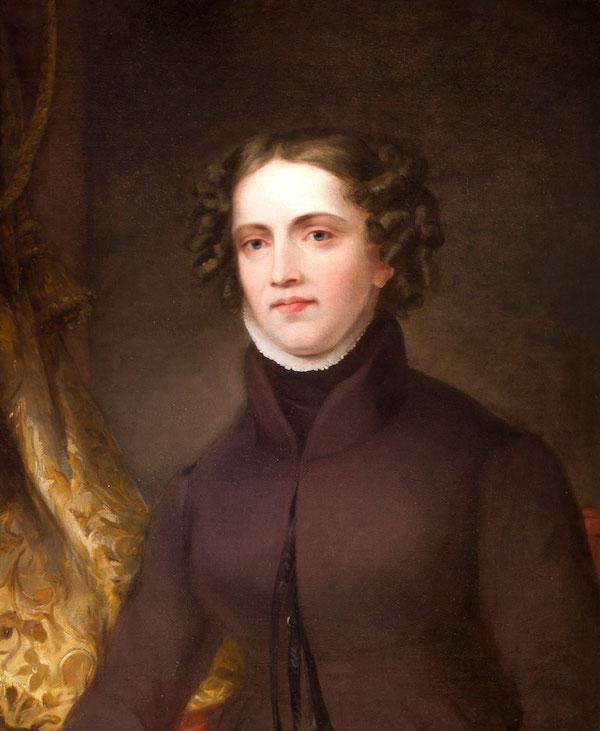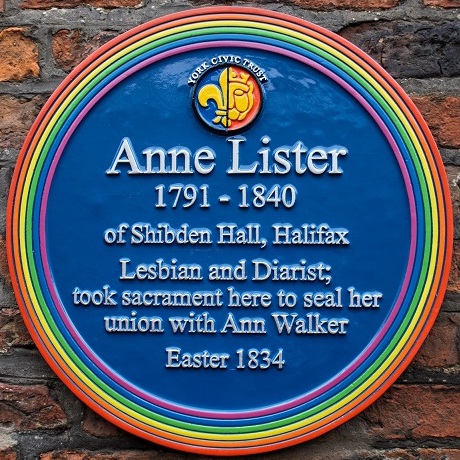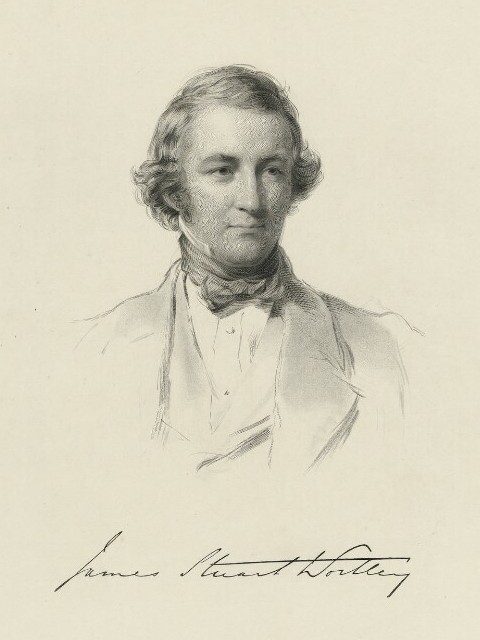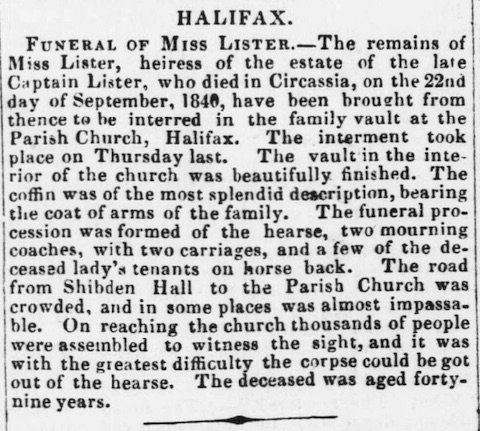"No historical interest whatever": Anne Lister, part 6
Anne Lister by John Horner, ca. 1830s. Image source: Calderdale Museums: Shibden Hall Paintings
A continuation of "Captain Tom": Anne Lister, part 5
Anne Lister, (disappointing) heroine
In 2010 Emma Donoghue published an article in The Guardian entitled "My hero: Anne Lister." She wrote,
Not only did Lister ignore her culture's rules about whom she should sleep with, she scorned the other rules of womanhood, too. Always dressed mannishly in black (and called "Gentleman Jack" by the locals), she remodelled Shibden estate, ran a colliery, was the first woman to climb several peaks in the Pyrenees, and finally formed a canny marriage of convenience and paired up with a neighbouring heiress. Not a saint, then, but a woman who seized her freedoms rather than waiting for anyone to grant them to her. [1]
But Anne's ability to seize the freedoms outlined by Donoghue depended on her social and economic position as a landowner. And as Jill Liddington points out, "Many readers—coming to the Anne Lister writings hoping for a heroine, an empowerer of other women, an inspirational feminist icon—will be disappointed." [2]
Anne Lister held the political and social attitudes and wielded the economic power of a typical estate owner of her time. As more men became enfranchised, she manipulated her rent rolls and pressured her tenants to vote for her favored Tory candidates. She adamantly opposed women being given the right to vote:
Monday 6 December 1819: "'Rights of Women' [an article in the Manchester Observer] is a curious list of authorities in the support of the rights of women to take part in these reform meetings, to vote for representatives in the House of Commons &, in short, to be in every sense of the word, members of the body politic. What will not these demagogues advance, careless what absurdity or ruin they commit!" [3]
"Rights of Women." Manchester Observer, Saturday 27 November 1819, p. 824. Image source: University of Manchester Digital Collections: Peterloo: Manchester Observer (1818-1822)
She evicted elderly tenants who showed "symptoms of decrepitude" such as Benjamin Bottomley:Friday 9 December 1831: I really hoped he was wise enough to be persuaded that at his age (nearer ninety, I presume, than eighty), it was time to give up farming. . .if he has no money, he is unfit for the farm, and if he has money, the farm is unfit for him. [4]
And, following a common practice of her time, she exploited child labor in her coal pits. (She was not the only or the first woman to own a mine: we need look no further than her life companion Ann Walker, who was also an owner of mines that exploited child labor.) What that meant is described in the 1842 Children's Employment Commission investigation of the mines in the areas of Halifax and the West Riding of Yorkshire:
. . .Children are taken into these mines to work as early as four years of age. . .while from eight to nine is the ordinary age at which employment in these mines commences. . .female Children begin to work in these mines at the same early ages as the males.
. . .the nature of the employment which is assigned to the youngest Children, generally that of “trapping” [i.e., opening and closing trap doors in the mines], requires that they should be in the pit as soon as the work of the day commences, and, according to the present system, that they should not leave the pit before the work of the day is at an end. . .as the Children engaged in it are commonly excluded from light and are always without companions, it would, were it not for the passing and repassing of the coal carriages, amount to solitary confinement of the worst order. . .in some districts they remain in solitude and darkness during the whole time they are in the pit, and, according to their own account, many of them never see the light of day for weeks together during the greater part of the winter season. . .
A child "trapping." Illustration from The Condition and Treatment of the Children Employed in the Mines and Collieries of the United Kingdom (1842). Image source: British Library
In her Listerwick colliery her coal steward James Holt intended to install "hurrying gates" that were about three and a half feet high.
. . .at different ages, from six years old and upwards, the hard work of pushing and dragging the carriages of coal from the workings to the main ways, or to the foot of the shaft, begins; a labour which all classes of witnesses concur in stating requires the unremitting exertion of all the physical power which the young workers possess.
Children pushing and dragging coal wagons. Illustration from The Condition and Treatment of the Children Employed in the Mines and Collieries of the United Kingdom (1842). Image source: British Library
. . .there are coal mines present work which these [subterranean] passages are so small, that even the youngest Children cannot move along them without crawling on their hands and feet, which unnatural and constrained posture they drag the loaded carriages after them; and yet, as it is impossible, by any outlay compatible with profitable return, to render such coal mines. . .fit for human beings to work in. . .they can never be worked without inflicting great and irreparable injury on the health of Children. [5]
A young woman dragging a load of coal. Illustration from The Condition and Treatment of the Children Employed in the Mines and Collieries of the United Kingdom (1842). Image source: British Library
Anne Lister's freedoms were exceedingly costly to those who worked in her mines, farmed her lands, and generated her wealth.
Anne Lister, "The first modern lesbian"?
Search on the phrase "the first modern lesbian" and you will find page after page referencing Anne Lister. However, I think it's possible to complicate or qualify every word in that phrase, including "the." Anne Lister certainly possessed a singular character, but she was not unique.
In 1823 Anne made the acquaintance of a somewhat older woman, Miss Pickford, who had a masculine nickname, "Frank"; Anne's lover Mariana Lawton called Anne "Fred." As did Anne with Mariana, Miss Pickford also had a "particular friend," Miss Threlfall. Out on a walk one day alone with Miss Pickford, Anne rather bluntly steered the conversation to the nature of that friendship.
Thursday 31 July 1823: Talked of. . .what I suspected, apologizing and wrapping up my surmise very neatly till at last she owned the fact, adding, 'You may change your mind if you please,' meaning give up my acquaintance or change my opinion of her if I felt inclined to do so after the acknowledgement she had made. 'Ah,' said [I], 'That is very unlike me. I am too philosophical. We were sent on this world to be happy. I do not see why we should not make ourselves as much so as we can in our own way.'. . .she merely replied, 'My way cannot be that of many other people.' [6]
Miss Pickford was not, of course, mistaken in her choice of confessor, and was openly skeptical when Anne pretended that her understanding of what she had been told was "from reading and speculation but nothing further; she was mistaken. 'No, no,' said she, 'it is not all theory.'. . .She told me I said a great many things she did not at all believe. Whether she credits my denial of all practical knowledge, I cannot yet make out" (Friday 1 August 1823). [7]
Several days later during another walk alone with Miss Pickford, Anne once again turned the conversation to Miss Threlfall.
Tuesday 5 August 1823: I said I considered her connection with her friend a marriage of souls & something more. That if they were on a visit & their friend provided them separate rooms, it would be unnecessary & they would presently defeat this arrangement by being together. Under other circumstances it would have been a wonder that, with beauty, fortune, etc., Miss Threlfall did not marry, but now it was no wonder at all. Asked Miss Pickford if she now understood me thoroughly. She said yes. . .We parted mutually satisfied, I, musing on what had passed. I am now let into her secret & she forever barred from mine. Are there more Miss Pickfords in the world than I have ever before thought of? [8]
Indeed, we cannot know how many Miss Pickfords and Miss Threlfalls there were (but certainly many thousands more than we know of through documentary evidence). But Anne Lister was hardly the first or the only woman in Britain to transgress gender norms in her self-presentation or to live more-or-less openly with another woman in a committed relationship.
Thanks to her masculine-seeming dress and bearing, Anne was called "Captain Tom" and "Gentleman Jack." In early 17th-century London, according to Kit Heyam's Before We Were Trans: A New History of Gender (Seal Press, 2022), a stage performer and petty criminal named Moll Cutpurse (real name: Mary Frith) dressed as a man and was portrayed as a character named "Captain Jack" in The Roaring Girl (1611), a play by Shakespeare collaborator Thomas Middleton and Jonson collaborator Thomas Dekker. [9]
Title page of The Roaring Girle: or, Moll Cut-Purse, by Thomas Middleton and Thomas Dekker (1611). Image source: National Portrait Gallery London
In Passions Between Women: British Lesbian Culture 1668-1801, Emma Donoghue gives some known examples of women who lived together as married couples. In 1760 it was reported in the London Chronicle that Barbara Hill of York, dressed as a man and calling herself John Brown, had attempted to enlist but had been recognized by a former acquaintance. Hill had disappeared around 1745, leaving behind her dresses. She apparently worked at several men's occupations, including stonecutter and postchaise driver. Around 1755 she had married a woman "with whom she has lived very agreeably ever since. . .On her sex being discovered after her enlisting, her supposed wife came to town in great affliction, begging that they might not be parted" [10].
There is also evidence of couples where no male persona, disguise, or cross-dressing was involved. Donoghue notes two intriguing entries in a marriage register in Taxal, Cheshire:
Hannah Wright and Anne Gaskill, Parish of Prestbury, 4th September 1707
Ane Norton and Alice Pickford, Parish of Prestbury, 3rd June 1708 [11]
And the Ladies of Llangollen, of course, were viewed by Anne as models of the sort of lifelong commitment she was seeking in a companion (see "I only love the fairer sex": Anne Lister, part 1 for details of Anne's visit to the Ladies in 1822).
So Anne was hardly the only or the first woman to dress in a masculine fashion or live with another woman as a committed couple. But can she at least be thought of as modern? Well, yes and no.
As Donoghue notes, Anne dressed in a greatcoat and boots that enabled physically taxing outdoor activities such as walking long distances, driving carriages, and riding horses; she, rather than her father, managed her estate and made complex financial decisions that involved engaging with male tenants, estate owners, businessmen and workmen; she seduced many of her women friends and acquaintances; and she sought a strategic marriage with a richer woman that would provide the necessary funds for her ambitious plans.
In all this Anne was primarily adopting long-established male prerogatives, and so in that sense can be thought of as a modern woman. But as a dynastic landlord who lived primarily off of rents collected from her tenants, the vast majority of whom were rural smallholders, she was the beneficiary of a system that stretched back at least to the land enclosures of the 16th century.
She also disdained families whose wealth derived too recently from commerce, and refused to call on women she considered her social inferiors. Meanwhile she herself strove to befriend (and in some cases attempted to seduce) aristocratic women who were several notches above her on the social scale. Her position within and embrace of a rigidly stratified land-based class system do not seem, in my view at least, particularly modern.
And finally, if she lived today would Anne Lister have considered herself a lesbian? Possibly not. In her long seduction of Mrs. Barlow in Paris (see "It was all nature": Anne Lister, part 2), Anne touched on Sapphism, one early 19th-century term for lesbianism:
Saturday 13 November 1824: Got on the subject of Saffic regard. Said there was artifice in it. It was very different from mine & would be no pleasure to me. [12]
She did not like Mrs. Barlow to reciprocate in sex because Anne felt it "was womanizing me too much" (Saturday 19 March 1825). And she mentioned to Mariana "my sensitiveness of anything that reminded me of my petticoats" (Thursday 25 May 1826). Had she the language to articulate the concept it's possible that Anne might have considered herself a trans man. Once with Miss Pickford she got on the subject of gender and brought up the mythological figure of Tiresias, the male seer who, as a punishment inflicted by the gods, was transformed into a woman:
Wednesday 19 February 1823: Among other things, I noticed Mr W—'s having called the air "she." Miss Pickford spoke of the moon being made masculine by some nations, for instance, by the Germans. I smiled & said the moon had tried both sexes, like old Tiresias, but that one could not make such an observation to every one. [13]
Tiresias, of course, had a male consciousness in a woman's body; is this how Anne thought of herself?
But rather than attempting to place Anne in categories that during her time had not yet been named, perhaps we should pay closer attention to Anne's own perspective: she believed that she had been born as she was, and that her sexuality, as she told Mrs. Barlow, "was all nature."
Sources for and works discussed in this series:
Books
For more about this fascinating, formidable, complex, and at times disconcerting woman, all of the books below can be recommended:
Helena Whitbread, editor. I Know My Own Heart: The Diaries of Anne Lister, [1816–1824,] Virago, 1988/2010 (as The Secret Diaries of Miss Anne Lister).
Helena Whitbread, editor. No Priest But Love: Excerpts from the Diaries of Anne Lister, 1824–1826, New York University Press, 1992.
In 1970 Dr. Phyllis Ramsden, a scholar who had been working on the diaries for over a decade, published an article in the Transactions of the Halifax Antiquarian Society covering the entire period of the diaries as then known, "Anne Lister's Journal (1817-1840)." Ramsden wrote that the coded sections in the journals were "excruciatingly tedious to the modern mind. . .and of no historical interest whatever." [14]
Her assertion was contradicted by Helena Whitbread's (re-)discovery and first publication of decoded excerpts from Anne Lister's diaries. The chance comment that led to Whitbread's groundbreaking work is described in "I only love the fairer sex": Anne Lister, part 1. For those interested in Anne Lister, Whitbread's books are the place to start, in terms both of scholarly precedence and of the chronology of Lister's life.
However, in I Know My Own Heart/The Secret Diaries, Whitbread is compressing a decades' worth of diary entries into 400 pages, and sometimes there are gaps. In particular, Whitbread does not include much material about Sibella Maclean, the daughter of minor Scottish nobility through whom Anne became acquainted with the world of aristocratic women. And during a three-month-long stay with Isabella Norcliffe at Langton Hall in the fall and winter of 1820-21, Anne juggled at least three sexual partners (Isabella Norcliffe, Mariana Lawton's sister Anne Belcombe, and another visitor, Miss Mary Vallance). Whitbread covers this visit in a few pages and does not emphasize what seems to have been a pretty remarkable level of sexual activity.
No Priest But Love has half the number of pages of I Know My Own Heart, but covers a much shorter time frame (just over two years, September 1824 through mid-October 1826). As a result, Whitbread can include longer diary excerpts. These provide additional details about Anne's thoughts, attitudes, and behavior, and include more explicit accounts of her sexual encounters than in I Know My Own Heart. Unfortunately the convention followed in I Know My Own Heart of printing the plain-hand diary excerpts in roman type and the coded sections in italics is not followed in the sequel; all entries are printed only in roman type, forcing the reader to guess which sections Anne wished to conceal. Another odd choice: Mariana Lawton's first name is spelled "Marianna" throughout; although there was variable spelling of names in the early 19th century, was this the contribution of an overzealous copy editor? Both volumes are well indexed, include bibliographies and have informative notes, although I noticed a few page reference errors in the index to The Secret Diaries.
Anne Choma, Gentleman Jack: The Real Anne Lister, Penguin, 2019.
Choma's book was published to coincide with the first season of the BBC/HBO television series Gentleman Jack (2019; see below), and covers roughly the same time period (the first years of the 1830s); it even includes a foreword by Sally Wainwright, the creator of the series. It includes fewer diary excerpts and more connecting narrative (and so more speculative interpretation of motives, feelings and thoughts) than either Whitbread's or Jill Liddington's books. Choma also italicizes all diary excerpts, and so gives no indication of which portions were written in code. Not distinguishing between the coded and uncoded sections, as in Whitbread's No Priest But Love, results in the loss of essential information for the reader.
Choma also makes a few minor but annoying errors: for example, in commenting on Anne Lister's travels, Choma states that "it did not satisfy her to leave England for a week or two" (p. 209). Given the realities of travel before the establishment of railroad networks, this hardly seems remarkable: it took a week or more to journey from Halifax through London to Paris, and in 1834 it took Anne a month to travel less than a thousand mostly overland miles from Paris to Copenhagen. As a result of the time and effort involved in getting from one place to another, foreign trips, even to a single destination, tended to last for months rather than merely a week or two.
Choma also tends to omit or de-emphasize information that shows Anne Lister in an uncomplimentary light. For example, when Anne and Ann exchanged rings, Choma does not note that the ring Anne asked Ann to place on her finger was the very one Anne wore to symbolize her union with Mariana (and was a gift from her). And when the two women take communion together in York, Choma's excerpt from the diary ends with "The first time I ever joined Miss W— in my prayers. I had prayed that our union might be happy," omitting what follows: "she had not thought of doing as much for me" (see "Captain Tom": Anne Lister, part 5). Choma's book also lacks notes, sources (neither Helena Whitbread's nor Jill Liddington's books are acknowledged anywhere in Gentleman Jack), and an index.
Jill Liddington, Presenting the Past: Anne Lister of Halifax 1791–1840, Pennine Pens, 1994.
Jill Liddington, ed. Female Fortune: Land, Gender and Authority: The Anne Lister Diaries and Other Writings, 1833–1836, Rivers Oram Press, 1998.
Jill Liddington provides greater social and historical context than Choma and, like Whitbread, includes a full scholarly apparatus in both of her books. A fellow of the University of Leeds' Centre for Interdisciplinary Gender Studies, Liddington also has the advantage of approaching the material from the perspective of women's history, "especially the interplay between gender and class in nineteenth and twentieth century Britain" (from her page on the University of Leeds website). She has a complex story to tell, and she tells it well.
Presenting the Past consists of two papers published five years before Female Fortune was issued. The first paper covers the history of the diaries and the scholarship surrounding them up through Helena Whitbread's publication of I Know My Own Heart and No Priest But Love; the second paper discusses the surviving letters and Muriel Green's two book-length selections from them, Miss Lister of Shibden Hall: Selected Letters (1800-1840) (Book Guild, 1992), and her dissertation, A Spirited Yorkshirewoman: The Letters of Anne Lister of Shibden Hall, Halifax, b. 1791 - d. 1840 (1938). They offer fascinating detail on the gradual recognition of the diaries and letters as rich sources for the social, economic, political, and sexual history of the 19th century. And the first article offers a valuable summary of Anne Lister's early diary (1806-10), including some entries from the diary of Eliza Raine, Anne's first lover.
Female Fortune is a selection of excerpts from the diaries covering 1833-36. These were key years for Anne, during which she and Ann Walker made a symbolic marriage, Ann moved into Shibden Hall, Ann's estate was separated from that of her sister Elizabeth (after a struggle between Anne and Elizabeth's husband George Sutherland), and Anne and Ann each changed her will in favor of the other partner. It makes for compelling reading, and Liddington situates the material in the context of the economic and political developments of the time. Female Fortune became a major source for the second season of the Gentleman Jack TV series.
Taken together, the books by Whitbread, Choma and Liddington provide in-depth coverage of the two decades between 1816 and 1836, even if a few gaps remain. Still not given book-length treatment are the early years of Anne's diary (1806-1816), which include her first love affairs with Eliza Raine and Isabella Norcliffe, her seduction by Mariana Belcombe, and the crushing blow of Mariana's marriage to Charles Lawton. Neither has any book appeared on her final years (1836-40), including her extended and ultimately fatal trip with Ann through Russia; Liddington notes that Phyllis Ramsden's typescripts covering Anne's travels only quote sparingly from the diaries, and include almost nothing from the coded sections—the most personal material, and the most engaging for modern readers. [15]
Finally, a fully annotated critical edition of the complete diary would be an invaluable resource on a fascinating period in 19th-century history. Scholars, more work awaits.
Television dramatizations
Mariana (Anna Madeley) and Anne (Maxine Peake) in The Secret Diaries of Miss Anne Lister. Image source: BBC.co.uk
The Secret Diaries of Miss Anne Lister, written by Jane English, directed by James Kent, starring Maxine Peake as Anne Lister, BBC, 2010, 92 mins.
Gentleman Jack was not the first dramatization of Anne Lister's life. It was preceded by this program, which covers the period from the marriage of Mariana Lawton (Anna Madeley) in 1816 to the move of Ann Walker (Christine Bottomley) into Shibden Hall in 1834. (A brief textual epilogue informs us of the circumstances of Anne's death and the later decoding of the diaries.) In telescoping the events of almost two decades into a 90-minute film, inevitably much is omitted and some events are shifted.
But the program also takes a great deal of dramatic license: Anne (Maxine Peake) is shown as far nicer, far blonder, far more of a femme in dress and demeanor, and far less of a seductress than what we know of the real-life Anne. Ann Walker's move into Shibden Hall is for protection against intimidation by Christopher Rawson (Dean Lennox Kelly) over coal-mining, rather than the result of Anne's long planning. (When Ann first moves into Shibden, Anne's aunt (Gemma Jones) openly wonders why the women aren't sharing a bedroom; Anne replies rather primly, "I'm sure Miss Walker would like her privacy.")
Meanwhile, Ann is shown to be feisty and self-determined. She is the one who defies Mrs. Priestley (Richenda Carey), here her aunt rather than cousin by marriage; Ann also suggests that she move in permanently with Anne before the women have even exchanged their first kiss. And the "Captain Tom" marriage announcement in the newspaper (see "Captain Tom": Anne Lister, part 5) lacks the context of a hotly contested election and comes from a different source, Christopher Rawson, than the actual most likely perpetrator Rawdon Briggs (absent from film).
As we've come to expect of a BBC production, the costumes and settings are recreated in exquisite detail, the film is beautifully photographed, and the acting is excellent; unfortunately, far weaker is the script's historical verisimilitude.
Anne (Suranne Jones) and Ann (Sophie Rundle) in Gentleman Jack. Image source: BBC.co.uk
Gentleman Jack, written and directed by Sally Wainwright and others, starring Suranne Jones as Anne Lister, BBC, 2019–2022, 16 episodes, 950 mins.
With a few exceptions, the characters and events we encounter over the two seasons of Gentleman Jack are far more true their representations in the diaries. We see Anne (Suranne Jones) evicting an elderly tenant, and as she's planning to sink her own coal pit, learning that its profitability will rely on the employment of women and children. She's also overbearing to her sister Marian (absent from The Secret Diaries) and implacably opposed to her attachment to Mr. Abbott (John Hollingworth). Ann (Sophie Rundle) is ambivalent about moving to Shibden, and Anne's Aunt Anne (the ageless Gemma Jones once again) is sweetly accepting (and even encouraging) of her niece's desire for a female companion.
The writers can't resist adding some completely fictional drama, however. There's a double murder subplot involving one of Anne's tenant families that is wholly unnecessary. And Anne is physically attacked on the street by a thug hired by Christopher Rawson (Vincent Franklin), who is even nastier here than in The Secret Diaries. The real-life Anne was often subjected to rude comments, and was once confronted when out on a walk by a man carrying a stick, but she faced him down and no assault took place. Another man once tried to put his hand up her dress, but she "was aiming a blow [with her umbrella] when the fellow ran off as fast as he could" (11 January 1820). Both the murders and the assault are unneeded embellishments of and distractions from Anne's story.
Having 16 episodes to cover the events of roughly four years means that the series can spend more time giving us a fuller picture of Anne's life. Sometimes that can be too much of a good thing, and the series gets bogged down a bit in the details of her negotiations over coal mining and her conflict with Ann's suspicious brother-in-law George Sutherland (Derek Riddell) about dividing the Walker estate. I would have preferred instead if the series had provided more flashbacks to Anne's earlier life, which was certainly rich in incident; had the series done so it would have given us more of a sense of the experiences that helped shape her.
However, a key reason to watch the show is the performance of Suranne Jones as Anne, who, naturally enough, is in virtually every scene of every episode. Unafraid to be unsympathetic (although the character softens a bit as the series progresses), Jones is an arresting presence onscreen. It's unfortunate that it looks as though Season 2 will be the last opportunity to see her dynamic portrayal of Anne Lister; in June it was announced that HBO would not renew Gentleman Jack.
Other posts in this series:
- "I only love the fairer sex": Anne Lister, part 1
- "It was all nature": Anne Lister, part 2
- "I was now sure of the estate": Anne Lister, part 3
- "Who taught you to kiss?": Anne Lister, part 4
- "Captain Tom": Anne Lister, part 5
- Emma Donoghue, "My hero: Anne Lister," The Guardian, 27 August 2010. https://www.theguardian.com/books/2010/aug/28/anne-lister-by-emma-donoghue
- Jill Liddington, ed. Female Fortune: Land, Gender and Authority: The Anne Lister Diaries and Other Writings, 1833-36, River Orams Press, 1998, p. 242.
- Helena Whitbread, ed. The Secret Diaries of Miss Anne Lister, Virago, 2010, p. 124.
- Anne Choma, Gentleman Jack: The Real Anne Lister, Penguin Books, 2019, p. 56.
- All report quotes taken from The physical and moral condition of the children and young persons employed in mines and manufactures: Illustrated by extracts from the reports of the commissioners for inquiring into the employment of children and young persons in mines and collieries, and in the trades and manufactures. . ., Published for Her Majesty's Stationery Office, by John W. Parker, 1843, pp. 1-3, 6.
- Secret Diaries, p. 292.
- Secret Diaries, pp. 293-294.
- Secret Diaries, pp. 295-296. It seems doubtful that Miss Pickford was forever barred from Anne's secret; she seems to have understood it immediately. On reintroducing herself to Anne (they had first met in Bath a decade earlier), Miss Pickford told her "she had often thought I should be congenial with herself."
- Kit Heyam, "The Liberating and Sexual Potential of Gender Nonconformity, circa 1611," Literary Hub, 15 September 2022. https://lithub.com/the-liberating-and-sexual-potential-of-gender-nonconformity-circa-1611/
- Emma Donoghue, Passions Between Women: British Lesbian Culture 1668-1801, HarperCollins, 1993, p. 67.
- Donoghue, Passions Between Women, p. 65.
- Helena Whitbread, ed. No Priest But Love: Excerpts from the Diaries of Anne Lister, 1824-1826, New York University Press, 1992, p. 49.
- Secret Diaries, p. 257.
- Quoted in Secret Diaries, p. xiv.
- Jill Liddington, Presenting the Past: Anne Lister of Halifax 1791–1840, Pennine Pens, 1994, pp. 18-21.









